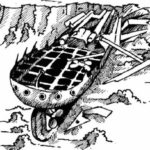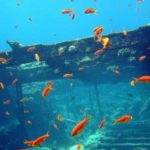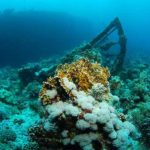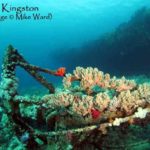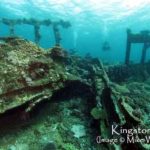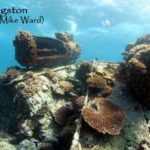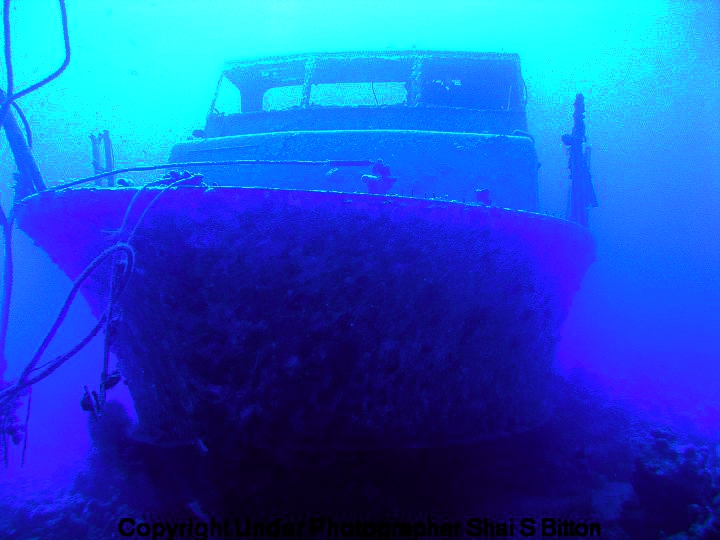The Kingston was an “iron screw steamer” of 1,436 or 1,448 GRT built at Oswald Shipbuilding (Thomas Ridley Oswald, owner), Pallion, Sunderland, UK for the Commercial Steamship Company Ltd. (Mr. John Sheriff Hill, No. 32, Great St. Helens, London, managing owner). The ship was launched 16 February 1871 with a length of 78 meters, 10 meters in beam, and 6 meters in draught. The ship was Brigantine rigged with a mast located both forward and aft. She had a single deck with a 2 tiered superstructure located forward of amidships and a raised deckhouse aft, most likely for accommodations for the 25-man crew. Below decks she was built with 5 cemented bulkheads. Primary propulsion was provided by a 2-cylinder 130-HP compound steam engine (cylinders were 29 ½ & 58 ½ inches diameter respectively)by North East Marine Engine Co., Sunderland, which gave the ship a to speed of 11 knots.
Throughout the ship’s life, the Kingston operated as a coal carrier. In 1878 the ship received new boilers, also from North East Marine Engine Co., Sunderland, to replace the aging boilers which the ship was originally built with.
In 1879 the ship’s Masters are listed as being Captains Chitham and Firth. However, neither of these Masters were onboard the ship at the time of her loss.
The passage from Cardiff to the Mediterranean, and then transitting the Suez Canal was made without incident, and the ship departed Suez at 0815 16 February in calm seas, cloudy skies, and a slight Northwest breeze and continued her voyage south towards Aden with engines running at full speed.
When the ship reached the Zenobia lightship at Newport Rock the ship’s course was altered to South-1/2-East and continued on this course, passing the Zafarana light at 1245 at a distance of 2.5-3 miles when the course was changed again to South-Southeast.
At 2245 Captain Cousins then ordered the 2nd Mate to set the foresail. The 2nd mate sent a man aloft to loosened the sail and called the forward lookout away from his post to assist in setting the sail. Once this was done, the 2nd mate and another crewman went aft to trim the yards.
By the following morning, the 18th, approximately 60-70 tons of the ship’s cargo had been thrown overboard. During the day, another steamship, the Columbian arrived at the scene and offered to assist in pulling the Kingston off of the reef. A line was passed between the two ships and attempts were made to refloat the ship, all unsuccessful, after which the Columbian also left and continued on her voyage.
At the Board of Trade Enquiry conducted on 13 April 1881, it was decided that the loss of the Kingston was as a result of “unseamanlike” conduct in regards to the navigation and safe handling of the ship. As a result, his Master’s certificate was suspended for 6-months, however, he was allowed to keep his First Mate ticket.
Diving Information
When the time comes to have to leave the wreck, turn with the reef on your left shoulder and let the current carry you along until you reach the western side of the reef, which is usually calm water. Corals all along the reef and in this area are extremely amazing!
Miramar Single Ship Reports for 5613121
http://www.plimsoll.org/resources/SCCLibraries/WreckReports/14738.asp
http://www.aquatours.com/wrecks/kingston.htm
http://www.reach.net/~sc001198/ShipsK.htm
http://www.tornadomarinefleet.com/northern-red-sea
http://www.blueotwo.com/filestore/pdfs/Wreck%20Exploration2.pdf
www.redseadivers.com/gulfwrecks.htm
http://www.scuba.co.uk/Travel/Red_Sea/Liveaboard/Wrecks/redsea_wrecks_kingston.htm




